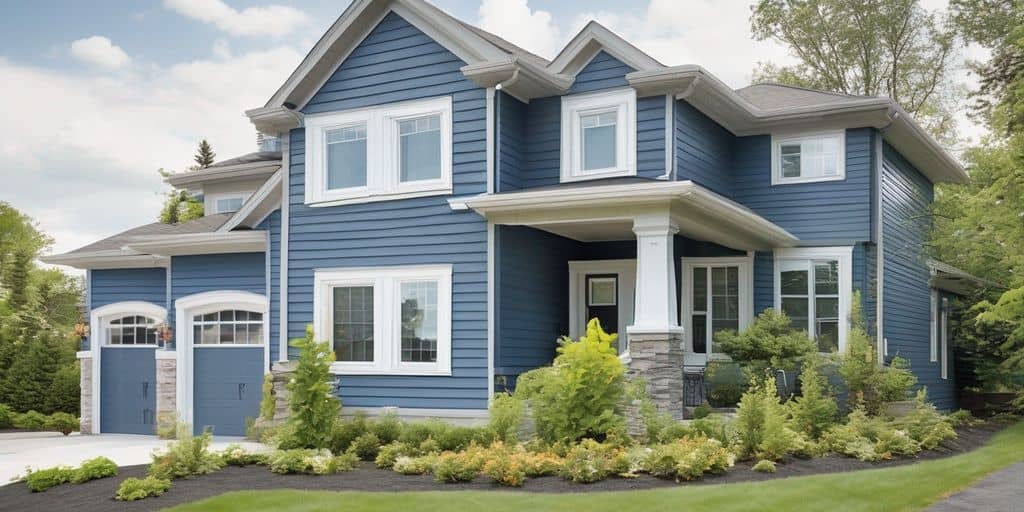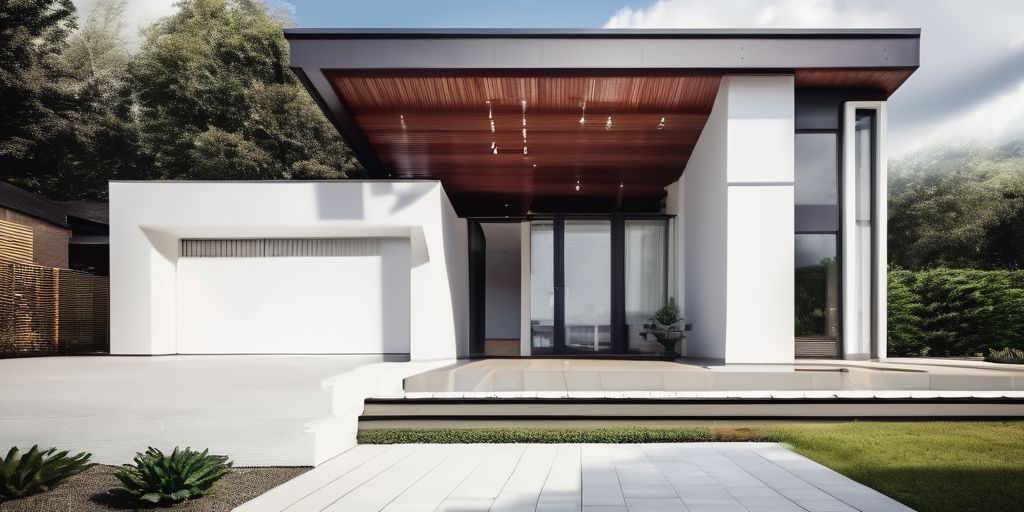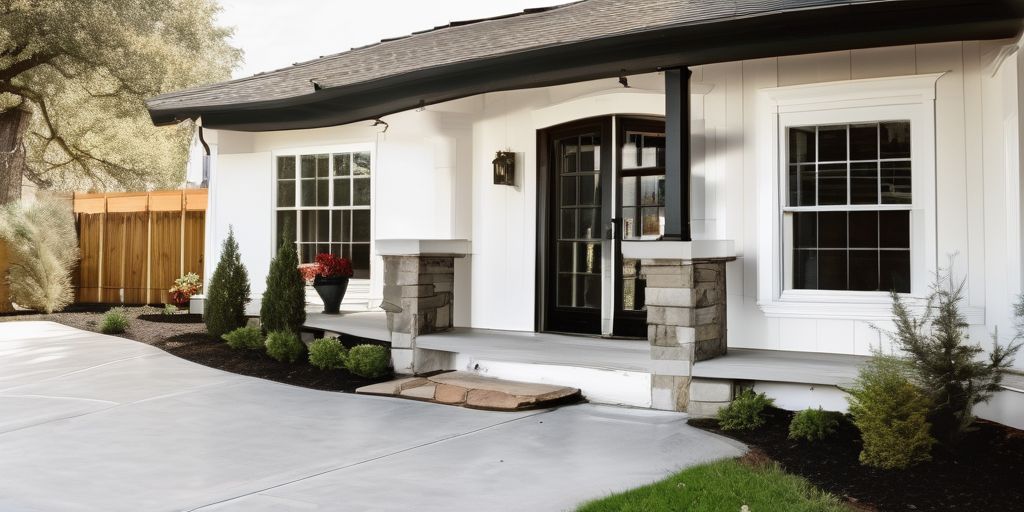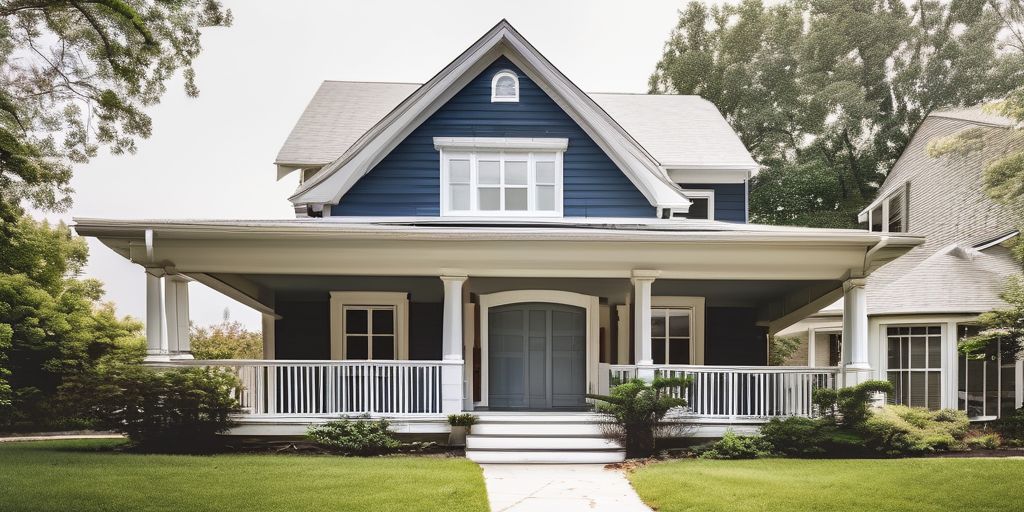Choosing the right paint for your aluminum siding is crucial, especially if you live in Cambridge. The color you pick can have a big impact on your home’s appearance and energy efficiency. This guide will help you understand the basics of aluminum siding, the effects of different colors, and the best preparation and painting methods to use.
Key Takeaways
- Dark colors absorb more heat, which can affect your home’s temperature and energy bills.
- Light colors reflect sunlight, keeping your home cooler and potentially lowering energy costs.
- Proper surface preparation, including cleaning and priming, is essential for a long-lasting paint job.
- Spray painting offers a smoother finish compared to traditional brush and roller methods.
- High-quality paints specifically designed for aluminum siding ensure better durability and appearance.
Understanding the Basics of Aluminum Siding
What is Aluminum Siding?
Aluminum siding is a popular choice for home exteriors, known for its durability and low maintenance. It is made from aluminum sheets that are coated with enamel or paint to protect against the elements. This type of siding is lightweight, resistant to rust, and can mimic the appearance of other materials like wood.
Advantages of Aluminum Siding
Aluminum siding offers several benefits, including:
- Durability: It can withstand harsh weather conditions without deteriorating.
- Low Maintenance: Requires minimal upkeep compared to other siding materials.
- Fire Resistance: Aluminum does not burn, making it a safer option for homes.
- Versatility: Available in various colors and styles to suit different architectural designs.
Common Issues with Aluminum Siding
Despite its advantages, aluminum siding can face some challenges:
- Fading Color: Over time, the color may fade due to sun exposure.
- Dents and Scratches: Aluminum is prone to dents and scratches from impacts.
- Chalkiness: A white, powdery residue can form on the surface, known as chalking.
- Corrosion: In areas with high moisture, aluminum can corrode if not properly maintained.
Regular maintenance, such as cleaning and reapplying primer, keeps your siding looking new.
Understanding these basics can help you make an informed decision when considering aluminum siding for your home.
The Impact of Color on Aluminum Siding
Choosing the right color for your aluminum siding can have a significant impact on your home’s appearance and functionality. Let’s explore how different colors affect aluminum siding and what you should consider when making your choice.
Preparation Steps for Painting Aluminum Siding
Cleaning and Priming the Surface
Before you start painting, it’s crucial to clean and prime the aluminum siding. Proper surface prep is essential for the paint to adhere well. Follow these steps:
- Clean the Surface: Use a mild soap and water solution to wash the siding. A soft brush or cloth can help remove dirt and grime without scratching the surface.
- Rinse Thoroughly: Make sure to rinse off all soap residue with a garden hose.
- Sand the Surface: Lightly sand the siding with 220-grit sandpaper to create a smooth surface for the primer.
- Apply Bonding Primer: Use a primer specifically designed for metal surfaces to ensure the paint sticks properly.
Dealing with Vegetation and Mildew
Vegetation and mildew can be problematic when painting aluminum siding. Here’s how to handle them:
- Trim Vegetation: Cut back any plants or bushes that are close to the siding to prevent them from touching the freshly painted surface.
- Remove Mildew: Use a solution of water and trisodium phosphate (TSP) to clean any mildew. This step is crucial for preventing future issues.
Importance of Professional Preparation
While DIY preparation is possible, hiring professionals can save time and ensure high-quality results. Professionals have the expertise to handle:
- Thorough Cleaning: They use specialized tools and solutions to clean the siding more effectively.
- Proper Priming: Experts know the best primers to use for different conditions, ensuring long-lasting results.
- Detailed Inspection: Professionals can spot and fix issues that might be missed by an untrained eye.
For those living in the Cambridge area, consider the local weather conditions when preparing your siding. The right preparation can make a significant difference in the longevity of your paint job.
Choosing Between Spray Painting and Traditional Methods
Benefits of Spray Painting
Spray painting is often the preferred method for aluminum siding. Here are some reasons why:
- Even Application: Spray painting ensures a smooth, uniform finish, avoiding the friction and unevenness that brushing or rolling can cause.
- Speed: It covers large areas quickly, making it ideal for extensive siding projects.
- Thicker Coatings: Spray painting allows for thicker, more consistent layers, enhancing durability and visual appeal.
- Less Dirt Buildup: The smooth finish is less likely to attract dirt, keeping your siding cleaner for longer.
Drawbacks of Brush and Roller Techniques
While traditional methods have their place, they come with some downsides:
- Textured Surfaces: Brushes and rollers can create small crevices that attract dirt and grime.
- Uneven Layers: It’s challenging to achieve a consistent layer, which can affect the durability and look of the paint.
- Time-Consuming: These methods are slower, requiring more time and effort to cover large areas.
When to Use Each Method
Choosing between spray painting and traditional methods depends on several factors:
- Surface Type: Smooth surfaces like aluminum siding benefit more from spray painting.
- Project Size: For large areas, spray painting is more efficient. Smaller, detailed areas might be better suited for brushes and rollers.
- Desired Finish: If you want a sleek, uniform look, spray painting is the way to go. For a more textured finish, traditional methods might be preferable.
For homes near landmarks like Harvard Square, a professional finish can make your property stand out even more.
In summary, both methods have their pros and cons. Consider your specific needs and the characteristics of your home when making a decision.
Selecting the Best Paint for Aluminum Siding
Types of Paint Suitable for Aluminum
Choosing the right paint for aluminum siding is crucial for a long-lasting finish. Here are some types of paint that work well:
- Acrylic Latex Paints: These are popular due to their durability and ease of application. They adhere well to metal surfaces and resist peeling and fading.
- Oil-Based Paints: These offer a hard, durable finish but can be more challenging to apply and clean up.
- Urethane Paints: Known for their excellent adhesion and resistance to weathering, making them a good choice for exterior surfaces.
Why Quality Matters
Investing in high-quality paint can save you time and money in the long run. Quality paints provide better coverage, last longer, and are more resistant to the elements. This is especially important in areas with harsh weather conditions, like Cambridge.
Using high-quality paint ensures that your aluminum siding will look great and be protected for years to come.
Top Brands Recommended for Aluminum Siding
When selecting paint for aluminum siding, consider the following factors:
- Adhesion: The paint should stick well to metal surfaces.
- Durability: It should withstand weather conditions without peeling or fading.
- Ease of Application: Look for paints that are easy to apply, whether by brush, roller, or spray.
For the best results, always choose paints specifically formulated for metal surfaces. This ensures better adhesion and a longer-lasting finish.
Maintaining Your Painted Aluminum Siding
Once your aluminum siding is primed and painted, keeping it in good shape is important. Regular cleaning and touch-ups can make your siding last much longer. Here are some tips to help you maintain your aluminum siding:
Routine Cleaning Tips
- Inspect your siding regularly for any signs of damage or wear.
- Wash the siding at least once a year using a mild soap and water solution.
- Use a soft brush or cloth to avoid scratching the surface.
- Rinse thoroughly with a garden hose to remove any soap residue.
Handling Chips and Scratches
- Check for any peeling or chipping paint every few months.
- Reapply primer and paint if you notice any bare spots or significant wear.
- Typically, a fresh coat of paint is needed every 5-7 years, depending on weather conditions.
- For the best results, consider hiring an exterior painter for professional touch-ups.
Repainting: When and How Often
- In the fall, clear away any leaves or debris that may have accumulated around the siding.
- During winter, watch for ice buildup and remove it carefully to prevent damage.
- In the spring, inspect for any damage caused by winter weather and address it promptly.
- Summer is a good time to do a thorough cleaning and any necessary repainting.
By following these maintenance tips, you can keep your aluminum siding looking great and lasting longer. Regular care and attention will ensure your home remains beautiful and protected from the elements.
Cost Considerations for Painting Aluminum Siding
Budgeting for Your Project
When planning to paint your aluminum siding, it’s essential to set a budget. Here are some factors to consider:
- Size of Your Home: The larger the home, the higher the cost. For example, the average cost to paint the exterior of a 2,000-square-foot home is $5,200, but that number rises up to $12,000 for a three-story house.
- Condition of the Siding: If your siding needs extensive prep work, like sanding and priming, expect to pay more.
- Quality of Paint: Higher quality paints may cost more upfront but can save money in the long run by lasting longer.
- Labor Costs: Hiring professionals will add to the cost, but it ensures a high-quality finish.
Comparing Costs: Painting vs. Replacing Siding
Sometimes, homeowners wonder if they should paint or replace their aluminum siding. Here are some points to help you decide:
- Initial Costs: Painting is generally cheaper than replacing. The average cost of a fiber cement siding installation project is $14,791. Meanwhile, aluminum siding can cost you around $11,750.
- Longevity: High-quality paint can extend the life of your siding by several years, making it a cost-effective option.
- Aesthetic Appeal: Painting allows for a fresh look without the hassle of a full replacement.
Getting a Professional Estimate
To get an accurate idea of what your project will cost, it’s a good idea to get a professional estimate. Here’s what to expect:
- Initial Consultation: A professional will visit your home to assess the condition of your siding and discuss your needs.
- Detailed Quote: You’ll receive a detailed quote that includes labor, materials, and any additional costs.
- Timeline: The estimate will also provide a timeline for the project, so you know what to expect.
By understanding these cost considerations, you can make an informed decision that fits your budget and meets your needs. Whether you choose to paint or replace your aluminum siding, careful planning will ensure a successful project.
When thinking about painting your aluminum siding, it’s important to consider the costs involved. Painting can be a budget-friendly way to refresh your home’s look without the high expense of replacing the siding. Our team offers expert services that can save you money while giving your home a fresh, new appearance. Visit our website to learn more about our affordable options and get a free estimate today!
Conclusion
Choosing between dark and light paints for your aluminum siding in Cambridge is a decision that can greatly impact the look and feel of your home. Dark colors can give a modern and bold appearance, while light colors can make your home look larger and more inviting. Both options have their own benefits and challenges, but with the right preparation and high-quality products, you can achieve a beautiful and durable finish. Remember, the key to a successful paint job is thorough preparation, choosing the right products, and professional application. Whether you opt for a dark or light color, your aluminum siding can be transformed to enhance your home’s curb appeal and protect it for years to come.
Frequently Asked Questions
Why should I choose aluminum siding for my home?
Aluminum siding is durable, lightweight, and resistant to rust. It also requires less maintenance compared to other materials.
How does the color of paint affect aluminum siding?
The color of the paint can impact heat absorption. Dark colors tend to absorb more heat, which can make your home warmer, while light colors reflect heat, keeping it cooler.
What are the pros and cons of spray painting versus traditional methods?
Spray painting provides a smooth, even finish and is faster for large areas. However, it requires more preparation and equipment. Traditional brush and roller methods are easier for small areas and detailed work but can leave brush marks.
How do I prepare my aluminum siding for painting?
Preparation involves cleaning the surface thoroughly, removing any old paint, and applying a primer. This ensures the new paint adheres well and lasts longer.
How often should I repaint my aluminum siding?
Typically, you should repaint your aluminum siding every 5-10 years, depending on the quality of the paint and the weather conditions in your area.
Is it better to paint or replace aluminum siding?
Painting is usually more cost-effective than replacing. It can give your home a fresh look without the high expense of new siding.






